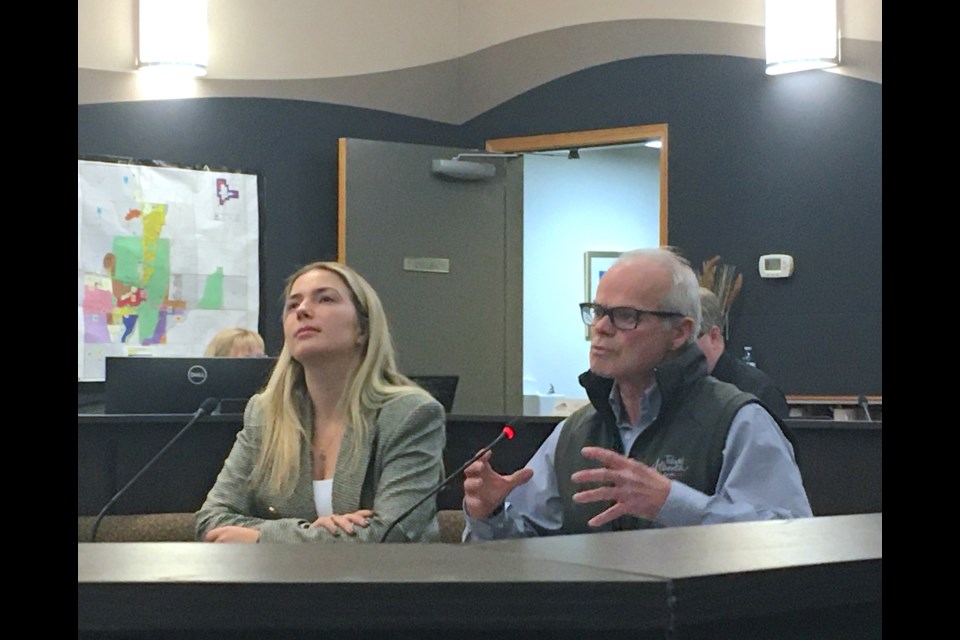SUNDRE – Provided Tourism Alberta reaches its goal to double to $20 billion by 2035 the amount of dollars spent by tourists in communities across the province, the slice of the proverbial pie would represent almost $150 million for the tourism development zone Sundre has been categorized into.
Those figures were part of a presentation to council during a recent meeting, when Cameron Spence, manager, destination development Foothills and Canadian Rockies, and Dayna Smockum, specialist, corporate communications and engagement with Travel Alberta outlined highlights from the Discovery Report project that’s been underway for more than a year.
“This report really links the aspirations and essentially what communities and stakeholders wanted to see as it pertains to tourism,” said Spence, adding the overarching goal across Alberta’s 10 tourism development zones is to double tourism expenditures in the province to $20 billion by 2035.
“Now, this is a very bold goal; any time you decide to double anything is a bold goal,” he said, adding that means achieving the lofty milestone will be a challenging process that requires creative thinking outside of the box.
In other words, the same destinations cannot be promoted to the same demographics if there’s any hope of achieving that goal, he said.
“We aren’t going to be able to double tourism revenues in the province to $20 billion by promoting the same places to the same people,” he said, adding that tourism in Alberta is concentrated heavily in Calgary, Edmonton, and of course the Rockies, all of which combined account for about 75 per cent of tourism activities in the province.
Additionally, he said there is also substantial seasonal variation of demand – most people travelling in Alberta do so during the summer.
So there is plenty of untapped potential throughout the province, and Tourism Alberta is exploring ways to create emerging destinations in coordination with communities through collaboration with all of the zones, he said.
The Discovery Report’s 2022-2035 projections for the Cochrane-Sundre-Rocky Mountain House zone forecast a 3.8 per cent annual growth in visitors and the region’s cut of the $20 billion goal would be an estimated $147 million, along with the potential creation of more than 1,000 jobs.
“With the right types of investments and the right type of partnerships in this zone, between now and 2035, it could represent up to close to a $150 million in additional expenditures in the area and 1,000 additional jobs,” said Spence, adding the estimates outlined in the report were calculated following stakeholder engagements with 280-plus groups including Indigenous representation as well as 64 businesses in three communities.
For the most part, those consultations indicate a clear interest in tourism being included among economic development efforts keeping in mind social and cultural values, he said.
But it can sometimes be challenging to determine where tourism fits in with a community’s economic platform, he said.
Among the stats included in the report was a break down on the sentiment of residents in Sundre’s tourism zone, with 65 per cent of respondents saying they’d welcome more visitors to their community, 63 per cent agreeing that tourism is important to their community, and 54 per cent stating that a strong tourism industry improves their quality of life.
“This zone has a higher propensity to want tourism to happen in the zone as long as it’s developed in a sustainable manner,” said Spence, adding the region already has a solid reputation to build upon.
“This particular zone has a high degree of familiarity with the Alberta market; this is only second to the Foothills. There’s a positive impression when people visit here; they’re enjoying it,” he said, adding that among the activities visitors are interested in are farmers’ markets, 27 per cent; camping, 33 per cent; and hiking, 23 per cent.
“Our team also took a look at this through an international lens,” he said, adding Travel Alberta leveraged some research conducted by Destination Canada, the national tourism organization that promotes the whole country on the world stage.
The Cochrane-Sundre-Rocky Mountain House zone’s strengths as identified in that report are: a spectrum of nature-based adventure activities, established year-round Indigenous operators, and the region’s western heritage, he said.
Among the challenges that will have to be explored are how to build more synergy, what opportunities may exist on Crown lands, closing accommodations gaps as well as expanding product offerings, all while bearing in mind resident sentiments and the environment.
But where there are challenges, there are also opportunities, and Spence said that working with key communities could help identify high-value product investment possibilities through public and private investments.
To build momentum moving forward, the report outlines calls to action including working groups and a collaborative approach that could pool resources.
“Travel Alberta is very committed to Sundre,” said Spence, adding that a tourism investment program that’s already in place will be taking new application intakes in 2024 to offer coaching that is available for communities as well as individual operators.
After Spence concluded the presentation, Coun. Chris Vardas asked what Travel Alberta would be in a position to do to for example help the owner of a motel.
“That type of project would qualify under what we call our Innovations Fund,” said Spence, adding that is available to make improvements to particular properties.
Additionally, Travel Alberta is an organization that promotes destinations by amplifying a message.
“So, you’d work with us and promote us on your website?” asked Vardas.
Spence said Travel Alberta has a content distribution system and added it would simply be a matter of being provided with content to post.



